Media | Articles
12 of the most memorable Aston Martins—and one best left forgotten
One hundred and ten years ago, on January 15 1913, Lionel Martin and Robert Bamford officially set up Bamford and Martin Ltd. to service and sell Singer cars in Kensington, West London. According to company lore the duo were soon “severely underwhelmed” by the cars they were selling and decided to “clench their jaws, hoist their sleeves” and make their own vehicle instead.
His competitive nature would lead Martin to race at the Aston Hill Climb in Buckinghamshire, first with a modified Singer and then with his own car, and by 1915 the words Aston and Martin were seen together for the first time.
The brand’s history is one of incredible ups and downs, of bankruptcies and rescues, of ambition sometimes beyond expertise. Despite all this however, Aston Martin has made some of the most beautiful, valued and exciting cars in the world.
The following 12 machines from Aston’s 12 decades in existence represent just a slice of the company’s incredible story. Feel free to fill in the blanks in the comments.
1914–15 Coal Scuttle

Just one new car left the Bamford and Martin workshop before the Great War intervened. Aston Martin’s official history says it was built in 1914, while other sources claim it wasn’t on the road until 1915. What everyone agrees is that the car soon gained the name Coal Scuttle as its rather utilitarian two-seater design resembled the sort of tool that every household had by its fireplace.
Marketplace
Buy and sell classics with confidence
1927 Series 1

The post-war years were tumultuous for the fledgling company. Bamford left the business as the new decade began, while Martin pursued his passion for racing, with funding from Count Louis Zborowski. Speed and endurance records were set at Brooklands and other circuits and by 1923 the company was selling cars to the public. However, with Zborowski’s death in 1924 funding dried up, and Bamford and Martin was bankrupted. Rescue came from another aristocrat with an appetite for automobiles—Dorothea, Lady Charnwood. In 1925 Martin was forced to sell out, and Charnwood and fellow investors Bill Renwick and August Bertelli renamed the company Aston Martin Motors. The Series 1 of 1927 was the first car to wear the legendary Aston Martin badge. There were three derivatives, but it was the racy S-type Type Sports three-seater, with its shorter, lower chassis that set the direction for the firm. Able to top 80 mph thanks to its 57-hp 1.5-liter engine it was quite the star at London Motor Show.
1939 Atom
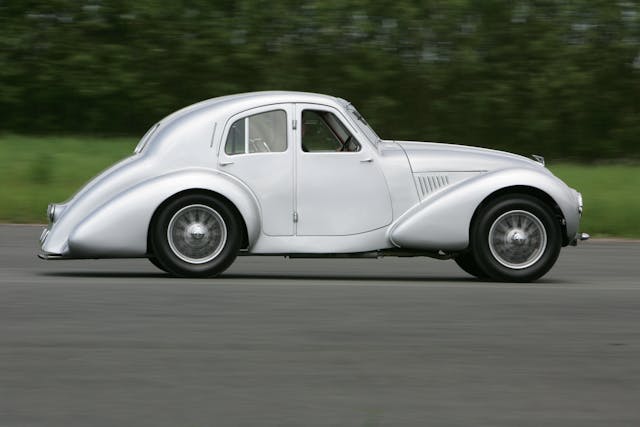
In 1934 the Aston Martin Ulster, named for securing all three podium spots at the 1934 RAC Tourist Trophy in Ulster, Northern Ireland was the first Aston Martin to top 100 mph. The Thirties was another decade of financial trouble with rescues from Lance Prideaux Brune and Sir Arthur Sutherland yet somehow in the midst of the crises Aston Martin developed the 1939 Atom concept, finished just before the outbreak of the Second World War. Powered by a new 2.0-liter, four-cylinder engine, the car’s curvaceous streamlined design would inspire the firm’s next generation—under new management again, of course.
1947 DB1
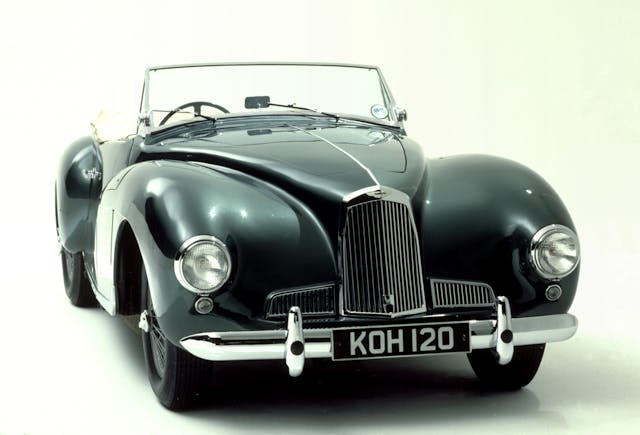
Aston Martin survived a second global conflict by switching its engineering expertise to war work, but by the end of 1946 the company was once again for sale. Tractor maker David Brown came to the rescue and with that followed a full 25 years of stability. Brown also acquired Lagonda and the rights for its 2.6-liter W.O. Bentley-designed engine, although the first car to be released after the war was built around the earlier 2.0-liter motor. The resemblance to the pre-war Atom is clear to see, although 13 of 15 cars produced were roadsters. As the first Aston Martin built under David Brown’s tenure, it became known as the DB1.
1958 DB4
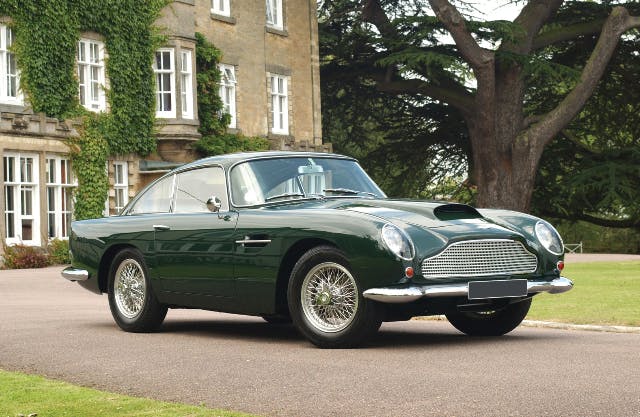
The company really hit its stride in the 1950s, with the Le Mans prototype-derived DB2, the DB2/4, DB Mark III and the Carrozzeria Touring-designed DB4 making their debuts. While the earlier car’s employed Lagonda’s engine by 1954 Tadek Marek’s 3.7-liter straight-six was being put to very good use. The DB4 also marked Aston Martin’s first collaboration with Zagato, creating possibly the most beautiful and sought-after model in the firm’s history.
1963 DB5

The Aston Martin of the 1960s belongs to Bond. James Bond. When Sean Connery took the wheel of the four-liter DB5 in 1964’s Goldfinger Aston Martin and 007 would be forever linked and the DB5 would become the most famous car in the world. Anyone would have reasonably thought that such desirability assured the firm’s future.
1977 V8 Vantage

Despite the phenomenal PR value of the Bond relationship, Aston Martin was in dire financial straits again. In 1972 David Brown personally paid off the company’s estimated £5 million debts and sold out to Company Developments for the nominal sum of £101. Two years later Aston Martin was in receivership again. A trans-Atlantic group of investors from the U.S.A., Canada and the U.K. bought the brand and re-opened the factory in 1976 as Aston Martin Lagonda Ltd. With new blood came a rush of new models, the V8 Vantage of 1977, the convertible Volante of 1978, the bonkers Bulldog, and the wildly over-optimistic Lagonda sedan. Guess what? By the end of the decade, despite the consortium’s best efforts Aston was in trouble again.
1986–89 Vantage Zagato

In early 1981 Pace Petroleum’s charismatic Victor Gauntlett bought into Aston Martin and became its executive chairman. Gauntlett knew the value of positive PR, rekindled the relationship with 007 by supplying a V8 Vantage for Timothy Dalton in The Living Daylights, obtained a Royal Warrant of Appointment from long-term fan Prince Charles, and even returned Aston Martin to its racing roots, with an entry (and seventh place finish) at Le Mans. During Gauntlett’s leadership Aston Martin manufactured its 10,000th car and once more teamed up with Zagato for the ungainly Vantage Zagato. All this was enough to attract the attentions of Ford, who bought 75 percent of the company in 1987.
1994 DB7
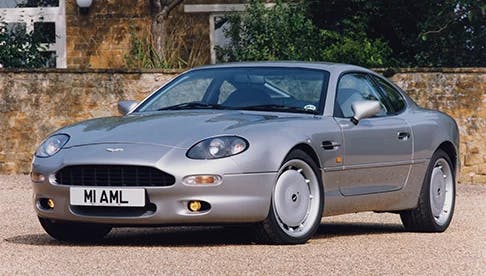
Ford’s cash would give Aston Martin 20 years of relative calm and the opportunity to invest in truly new products, the most crucial of which was the DB7 of 1994. It may have borrowed rather heavily from Jaguar and been developed by TWR, but it would become the most successful Aston to date. Power first came from a supercharged, 3.2-liter inline-six and later a 5.9-liter V-12. Over ten years 7000 were produced and Aston Martin’s future looked rosy.
2003 V8 Vantage
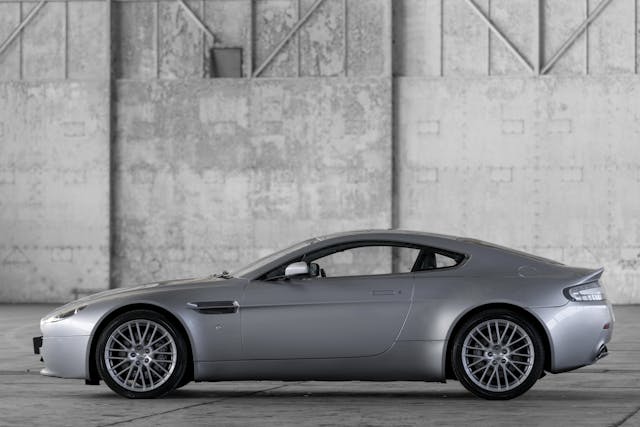
After having effectively a one-model range for some time Aston Martin was able to diversify under Ford. 2003 saw the introduction of the “entry-level” V8 Vantage and the more GT-oriented DB9. Ambitions were high with a factory in Germany able to produce 5000 V-8 and V-12 engines a year, but as has been the way through Aston’s history, that didn’t guarantee anything. In 2006 Ford broke up its Premier Auto Group (which also contained Jaguar, Land Rover, and Volvo). Prodrive’s David Richards bought Aston Martin with the aid of American banker John Sinders and two Kuwaiti companies for $848 million. Thus, another new era of ownership began.
2012 One-77

The early days of Richard’s stewardship were notably mostly for the introduction of the first four-door Aston Martin since the 1930s–the Rapide and for the company’s first hypercar, the mighty One-77. With its all-carbon construction and 7.3-liter , 750-hp V-12 engine this £1M ($1.9M) machine certainly attracted attention. A new investor, Italy’s Investindustrial took a sizable stake in the business and Richards left in 2013. Former Nissan executive Andy Palmer took the reins and a partnership with Mercedes-Benz was agreed, allowing Aston Martin to use Mercedes-AMG engines. The DB11 was the first to do so, followed by the Vantage and DBS.
2021 Valkyrie

After floating on the Stock Exchange somewhat unsuccessfully in 2018, Aston Martin would, yet again, find itself in financial difficulty. Now it was Canadian billionaire Lance Stroll to the rescue, who initially took a 16.7 percent stake and then upped it to 25 percent. On the product side it’s the move into the SUV market with the DBX which has been most significant (and profitable), but it’s cars like the one-off Victor and the no-rules Valkyrie, which was developed with Red Bull’s Adrian Newey, that are doing the most to raise brand equity. (Be sure to read Henry Catchpole’s Valkyrie review here.) As of today the British sports car maker is owned by Stroll’s Yew Tree Overseas consortium, Saudi Arabia’s Public Investment Fund, Mercedes-Benz, and China’s Geely. If history is anything to go by, this arrangement may not last long.
And one to forget…
2011 Cygnet

David Richard’s time at the helm also brought perhaps the biggest embarrassment in the firms’ entire 110-year existence. In a desperate bid to reduce the company’s corporate average emissions, Aston Martin bought up a bunch of Toyota iQ city cars, did some cursory external restyling of the front and rear, re-trimmed the cabin in leather, and charged double what Toyota did. The aim was to sell 4000 of them. Only 768 were built.
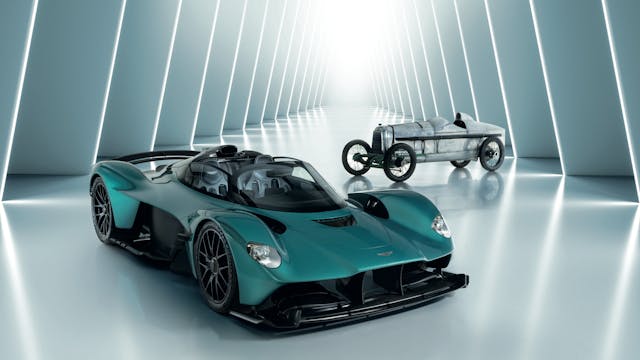














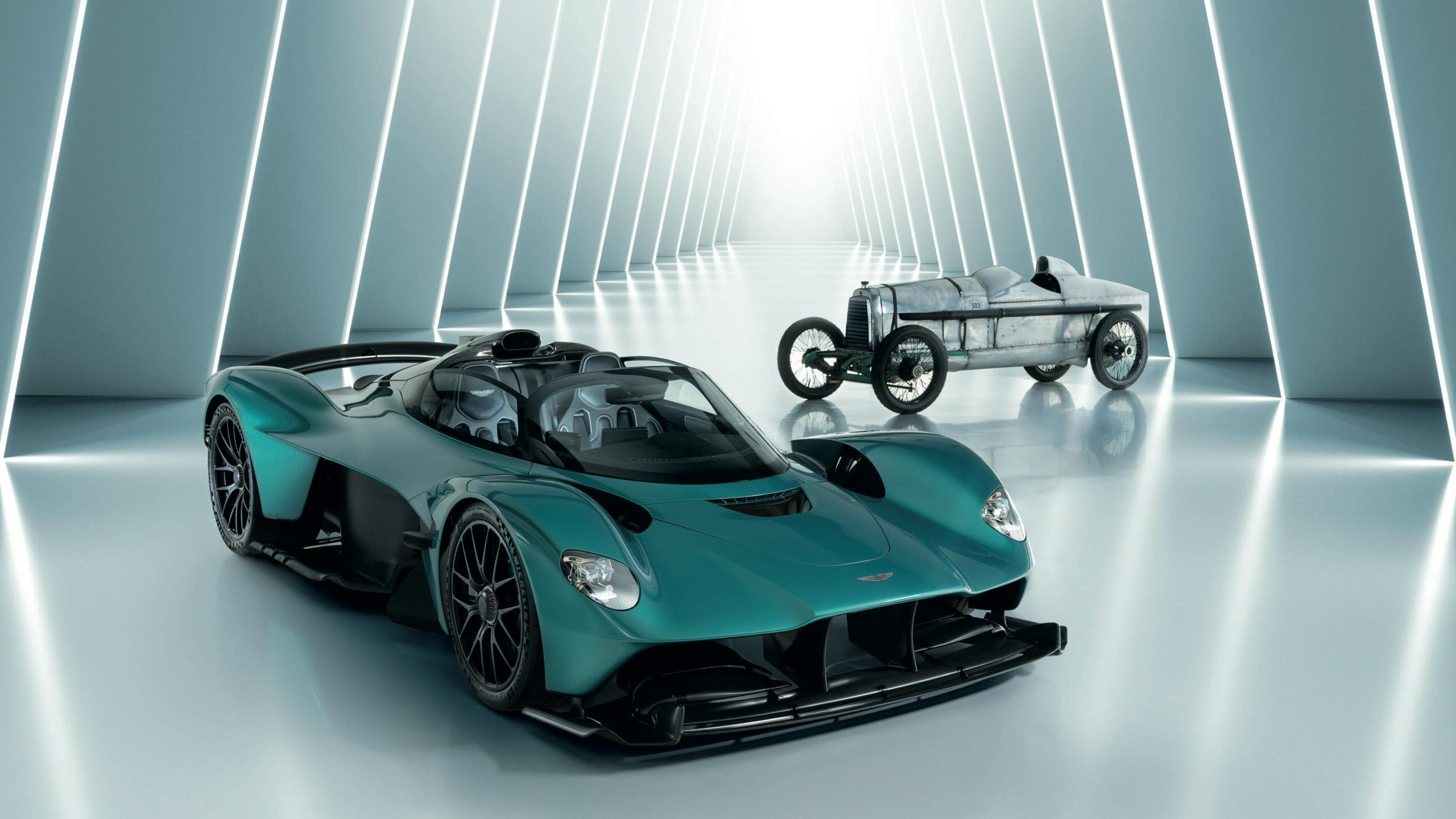
I clicked on this article knowing that there would be a picture of – at least – a DB5, and possibly a DB4. After looking through the entire list of cars and their pictures, I have come to the conclusion that, yes, the DB5 and DB4 are STILL my all-time favorite Aston-Martin vehicles! 🤔
DUB6 – agreed 100%!
Aston is just a glimmer of what they once were.
Today they just are not as interesting and the upkeep has killed resale. I see many used models not that old for the price of a old used Corvette.
Today they look more Jaguar like than Aston. I wish they could recapture the DB5 look in more modern terms.
They just never recovered from the Ford ownership.
I don’t like the direction the company is going. I’m also not nearly as much of a fan of the current lineup as I am of the previous generation (VH) cars, or any number of the older ones. For me, the AMG V8 engine is a complete deal-breaker. It’s a great engine, but it has no place in an Aston Martin. That said…
IMO, to say that Aston “is just a glimmer of what they once were” is going much too far. Moreover, to blame Ford is, IMO, inaccurate. I think Ford was a very beneficent custodian of Aston Martin. They largely funded Aston and let them develop great Aston Martins. The DB7 was developed under Ford. It had too much Jaguar in it for my personal preferences (and I love Jags), but Aston was as close to dead without actually dying as a company can get, so I understand the need to keep development costs low. The DB7 undoubtedly saved the company. Then, to their immense credit, Ford funded the development of the epic Vanquish and the superb VH-generation cars that were in production from 2004 through 2018, well beyond Ford’s ownership. These were all-Aston Martin — no shared engines, no shared platforms. They were engineered to Ford’s extremely rigorous durability standards. The notion that “upkeep” has killed resale doesn’t make much sense to me. If that’s the reason, how is it possible that Ferraris retain so much value? Don’t get me wrong, Astons certainly aren’t inexpensive to maintain. But these are expensive, exotic cars, and for this caliber of car the running costs are, IMO, pretty reasonable. The VH-generation cars in particular have proven to be generally very reliable and durable cars. I say this as the owner of a 2009 V8 Vantage I’ve had from new, which has been completely reliable. I’ve also had a 2005 Vanquish S for 8 years. While the Vanquish has been considerably more expensive to run than the Vantage, it’s been a lot less costly than many friends’ Ferraris and Lamborghinis. Oh, and I still lust after a DB4.
I couldn’t help but look up Cygnets for sale, they’re all going for 35-40000 Euro, nuts to me!
And as for Ford and Aston, and for that matter Jaguar, Ford did them both an immense service under their ownership. I have a 20 year old DB7 Vantage, and while it does resemble a Jaguar in its DNA, the Jaguar platform it’s derived from is heavily modified and drives completely differently than its Jaguar counterpart. I’ve had my DB7 for a year now and just finished a major service this fall, being a Master Jaguar Technician, retired, this car is no Jaguar copy cat.
I’m not a fan of the SUV trend but if it keeps the company above water, so be it.
Nik, about Mercedes engines, the current Vantage was the first to use the AMG V8. The DB11 V8 was the second. The DB11 V12 and the DBS do NOT use an AMG engine — the current V12 is Aston’s own engine.
What’s with the Cygnet hate? The Cygnet was necessary for Aston to continue selling their cars in the UK and it wasn’t just a rebadged iQ (at least inside). It also led to the weirdest (and in my opinion the coolest) aston of all time – The V8 cygnet
The Cygnet was NOT necessary for Aston to sell cars anywhere. There were rumors that it was needed to reduce Aston’s corporate CO2 figures (because otherwise there was no possible way to even attempt to make sense of it). This is completely false — Aston didn’t build enough cars for that to be an issue. Ulrich Bez, who did many great things for Aston but also was the instigator of the Cygnet, has stated on the record that it had nothing to do with anything regulatory — he just thought it was a clever idea. The Cygnet is so horrifying that words cannot adequately express the atrocity of sticking an Aston badge and grille on a fancied-up tiny Toyota.
The DB9 is better looking and more iconic than any Aston on this list. It appears in just about every top ten lists of beautiful cars. The article is not worth reading without it.
Nik…..was reading a current article here on Hagerty and found myself working back to yours. Glad I did. Fine piece on the Aston heritage, well done.
Surprisingly, probably because of my age …( slightly older than the majority of the above, I would guess…), I was drawn, not to the speed merchants and their shiny land rockets, but to the 1939 Atom. Unbelievable piece of engineering with classy appeal.